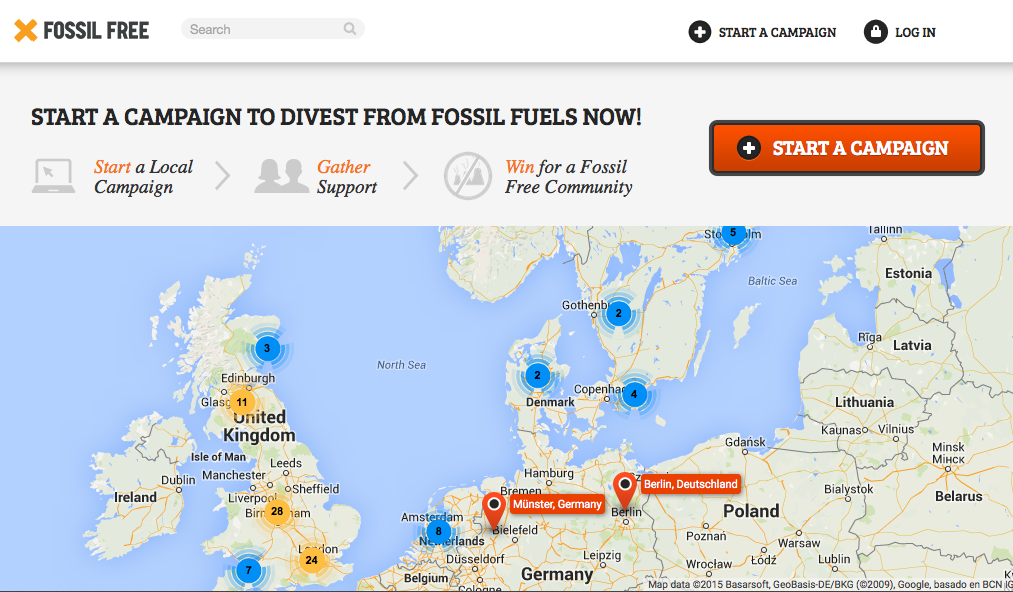Fossil Free UK
STEP 2:
Start A Petition & plan your campaign
Launching a petition is a great way to plant the divestment flag and get things moving. Planning resources will help you think through the key actions, next steps and where to target your energy.
Step 5 Turn up the Heat Step 6 Stay Connected Step 7 Win! Resources Tips, Guides, Factsheets and more Divestment Arguments Reasons to Divest
Launching a petition is a great way to plant the divestment flag and get things moving.
Here’s a free tool to use here that will stick you on the divestment map for others to find.
Planning the campaign doesn’t need to be complicated, but there are some resources for team building and campaign planning if you need them now or further down the line.
Start a petition
Petitions are a really useful way to demonstrate that there is wide support for your campaign.
The Fossil Free petition tool lets you set up your own petition, which will be added to the campaign map for others to see. You can download this step-by-step guide which explains all the different ways you can use these tools once your petition is launched.
 Crucially, the tool also lets you email and keep in touch with the people on the list to update them on campaign events, progress and actions.
Crucially, the tool also lets you email and keep in touch with the people on the list to update them on campaign events, progress and actions.
Bear in mind ‘launching’ the campaign (which can be through a petition, an event or action) may be a media opportunity and outreach moment in itself (like this great piece in the local press from Fossil Free Southwark).
Planning your campaign
A bit of thinking and research at the beginning can highlight key allies and avenues to explore and give the campaign direction, but strategy and planning should be revisited and revised as you go along and the campaign develops, do not get too bogged down at the start.
To come up with a strategy you’ll need to ask: what do we want to happen, who can make it happen and what are the actions and allies needed to get there? To make a campaign plan it’s all about which actions you’re going to do first, what next and how.
Top tips:
- What does success look like? Talk this through with your team, and come up with a shared idea of success.
- Who can make it happen? You’ll need to do a bit of research on who the decision makers are for your institution. You can use this bullseye sheet to map them, and their key influencers, out.
- Who influences them? Writing out all the groups, organisations on a power mapping chart is really helpful for thinking who your allies might be, and who to work with.
- What actions to take? You’ll need tactics and activities that work for you at different stages of the campaign. There are examples further on in the guide, and some more thoughts on tactics here if useful.
- When? Timing is important, and a campaign calendar with significant local and general movement events always helps forward planning and keeping up momentum.
- Putting it all together!? You’ll then have to make decisions about what to do first and how to do it. Mapping out your assets – what you’ve got and what you need – can help.
Here’s a great presentation from the Oxford local government campaign about their strategy so far, and this Campaign Strategy Guide talks things through in more detail if you need it.
You may want to delve deeper into strategy and planning, and the Change Agency have loads of resources and tools to help.
What about the investments!?
Exactly how much money an institution has invested in fossil fuels is a question that often comes up right at the start. The local government guide can help you work this out for your local government, and there’s information available for other organisations via the support organisations listed here.
Most importantly though: you don’t need to know the exact figure that’s invested in fossil fuels. Unless the institution has taken an active decision to get their investments out of fossil fuels, you can be pretty sure they will have some.